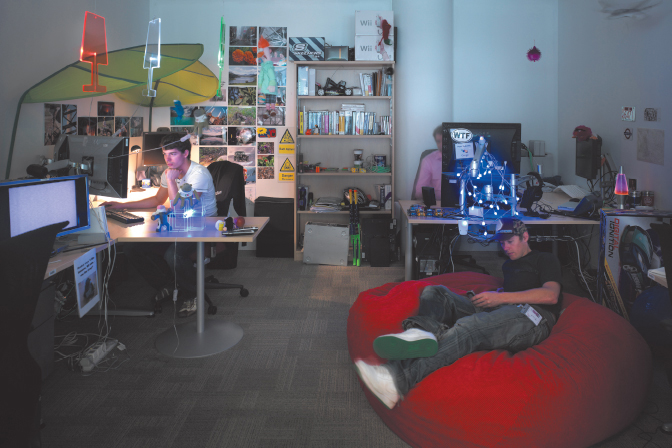7.3.10 Communicating Through The Environment
Printed Page 230
Communicating Through The Environment
A final way in which we communicate nonverbally is through our environment, the physical features of our surroundings. As the photo of the Google office (below) illustrates, our environment envelops us, shapes our communication, and implies certain things about us, often without our realizing it.

Two types of environmental factors play a role in shaping interpersonal communication: fixed features and semifixed features (Hall, 1981). Fixed features are stable and unchanging environmental elements such as walls, ceilings, floors, and doors. Fixed features define the size of a particular environment, and size has an enormous emotional and communicative impact on people. For example, the size of structures communicates power, with bigger often being better. In corporations, it’s often assumed that larger offices equal greater power for their occupants, and historically, the square footage of homes has communicated the occupant’s degree of wealth.
Semifixed features are impermanent and usually easy to change; they include furniture, lighting, and color. We associate bright lighting with environments that are very active and soft lighting with environments that are calmer and more intimate. Color also exerts a powerful effect on our mood and communication: we experience blues and greens as relaxing, yellows and oranges as arousing and energizing, reds and blacks as sensuous, and grays and browns as depressing (Burgoon et al., 1996).